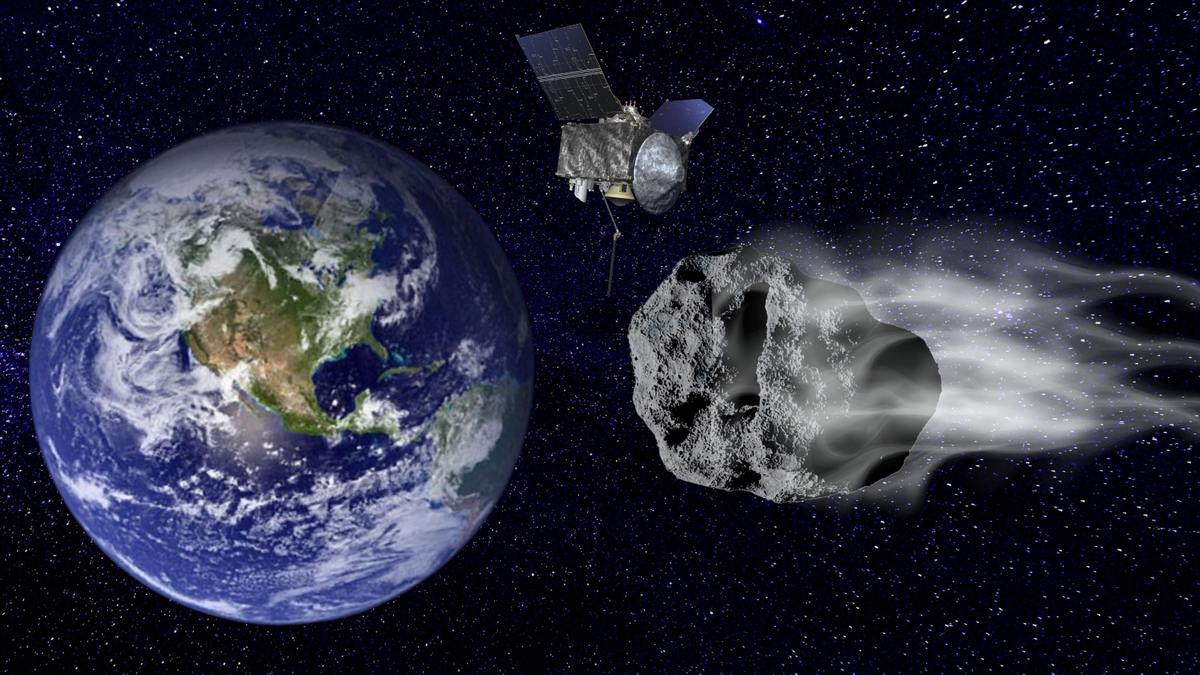The cosmos has always fascinated humanity, with celestial events captivating our imaginations and sometimes even evoking fear. Among the myriad celestial bodies that pass by our planet, Asteroid Apophis stands out due to its intriguing trajectory and the speculation surrounding its potential impact on Earth. Let’s delve into the intricacies of this celestial visitor and what experts anticipate for its close approach in 2029.

A Close Encounter:
Discovered in 2004, Asteroid Apophis quickly gained attention due to initial calculations suggesting a potential impact with Earth in 2029. Named after the ancient Egyptian god of chaos, Apophis measures approximately 370 meters (1,214 feet) in diameter, making it a significant celestial object with the potential for substantial impact should its trajectory intersect with Earth’s path.
Revised Calculations:
While initial observations indicated a potential impact, subsequent calculations and observations have revised the odds, providing a sigh of relief for those concerned about a catastrophic collision. Current projections indicate that Apophis will come remarkably close to Earth on April 13, 2029, passing within approximately 31,000 kilometers (19,000 miles) of our planet’s surface. To put this in perspective, this distance is closer than some of our geostationary satellites.
Scientific Exploration:
The close approach of Apophis offers a unique opportunity for scientists and astronomers worldwide to study this asteroid in unprecedented detail. Observatories, space agencies, and research institutions globally are gearing up to capture data, images, and insights into Apophis’s composition, structure, and trajectory. By analyzing this data, scientists hope to refine our understanding of asteroid behavior, composition, and potential mitigation strategies for future celestial threats.
Mitigating Potential Risks:
While the odds of Apophis impacting Earth in 2029 are currently deemed minimal, the event underscores the importance of vigilance, research, and preparation for potential future threats. Governments, space agencies, and international organizations collaborate on initiatives aimed at detecting, tracking, and mitigating potential asteroid impacts. From advanced telescopic observations to theoretical modeling and simulation exercises, efforts are underway to enhance our capabilities to anticipate, prepare for, and respond to celestial threats.
Looking Ahead:
As the date of Apophis’s close approach draws nearer, anticipation and excitement within the scientific community continue to grow. The event offers a rare opportunity to study a significant asteroid up close, providing invaluable insights into our solar system’s dynamics, evolution, and potential risks. While the chances of an impact remain remote, the event serves as a poignant reminder of the dynamic and unpredictable nature of our cosmos.
In conclusion, Asteroid Apophis’s close approach in 2029 promises to be a momentous event for astronomers, scientists, and space enthusiasts worldwide. As humanity observes this celestial dance from a safe distance, we continue to expand our knowledge, understanding, and appreciation of the vast and awe-inspiring universe in which we reside.
Shayne Heffernan









